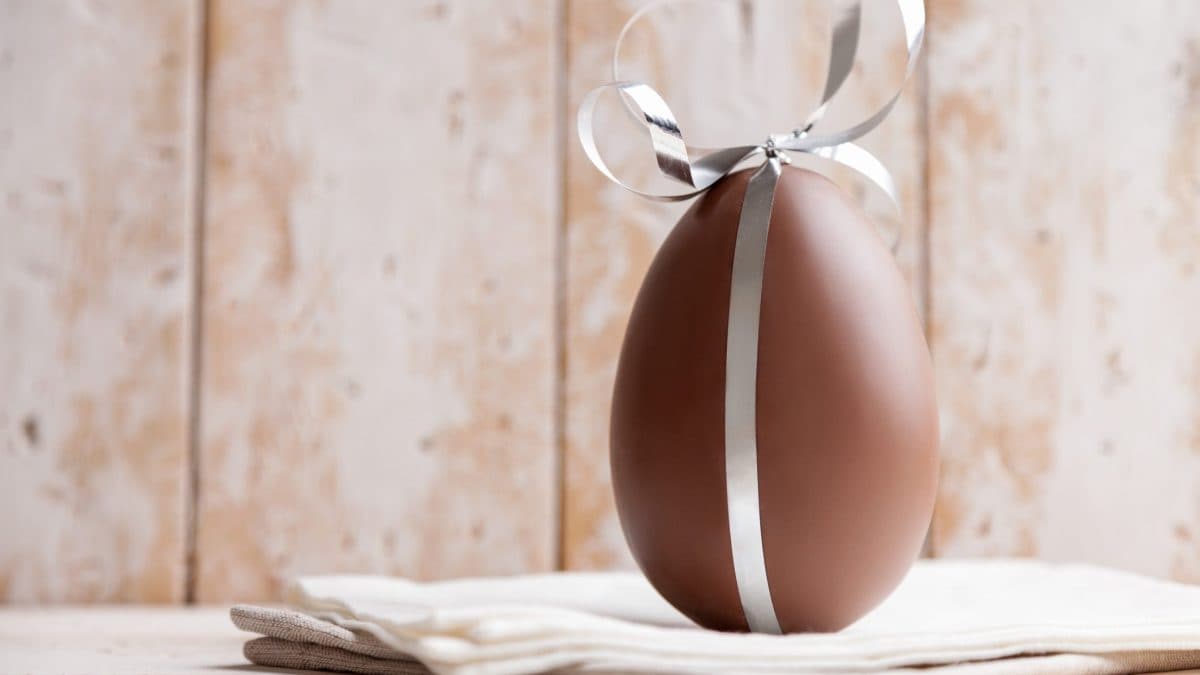
It may seem blasphemous, but the history of the Easter egg is very similar to the history of the Star Wars Multiverse. Let's explain better: there is a unique timeline, which unites the Easter egg of the most ancient peoples to the chocolate egg that we give ourselves, but in the midst of these 5,000 years there are many other stories that intertwine with each other, along with kings and emperors. It is fascinating, because it is probably the only gift in the history of man that has crossed continents, oceans, different millennia. The only gift that has been accepted by all cultures and that has evolved over time, while maintaining its symbol unchanged.
The Easter Egg Before the Christians: The Cosmic Egg
The tradition of the classic chocolate egg is relatively recent but the gift of real eggs, decorated with any type of design or dedication, is truly very ancient. The egg itself has archaic symbolic traits, it has often played the role of life itself and sacredness. According to some mythological beliefs, the sky and the Earth are considered two hemispheres that create a single egg. The Egyptians, for example, enclosed the four elements of the universe inside an egg in their mythology.
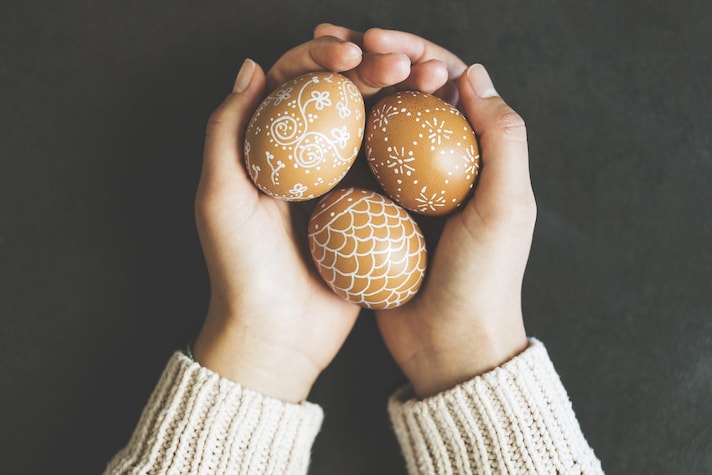
In many cultures there is talk of the cosmic egg, a very recurring archetype in ancient civilizations. The first evidence dates back to the Assyrians and Babylonians, but finds concerning the cosmic egg are also found in India, Egypt, Greece, China, in the Celtic regions and in the Bambara tribes, the main ethnic group still present in Mali today.
Among the religions that still exist, Hinduism is the first to have adopted the egg as a symbol, the cosmic egg itself: it is the "golden womb", identified as the soul of the world, a universal nucleus floating in the primordial ocean and wrapped in the darkness of non-existence. The hatching of the egg allowed the creation of the Earth: the upper half of the shell, made of gold, created the sky, the lower half, made of silver, created the planet.
The first contact with Christianity was around the 1st century BC thanks to the god Mithra, the pre-Christian deity most similar to God and Jesus as we know them today. There are many rites in common between the two religions, because it was very popular among Roman soldiers around the Empire. It is assumed that Mithraism disappeared as a religious practice only after the Theodosian Decree of 391 AD, which banned all pagan rites.
In addition to the religious and mythological component, everything we have described was accompanied by the tradition of giving eggs that has come down to us. One of the greatest anthropologists and theologians of the 20th century, Mircea Eliade, wrote that "the tradition of giving eggs is documented already among the Persians who exchanged simple chicken eggs in Spring. The Egyptians acquired this custom and considered the change of season as a sort of New Year's Day. The Greeks and the Chinese instead began to decorate eggs by hand with the first cosmetics". The Romanian scholar explains that "the egg represents the repetition of the exemplary birth of the Cosmos". It was like this until the arrival of Jesus Christ who, as in many areas, changed the history of man forever.
Why Did Christians Choose the Egg as a Symbol?
Christianity, like many other religions, has borrowed heavily from past traditions. The custom of Easter eggs linked to the death and resurrection of Jesus originated, not by chance, in Mesopotamia: from the studies of anthropologist Wilson Dallam Wallis it was discovered that "the first Christians in Mesopotamia stained eggs with a red dye, in memory of the blood of Christ shed at his crucifixion".
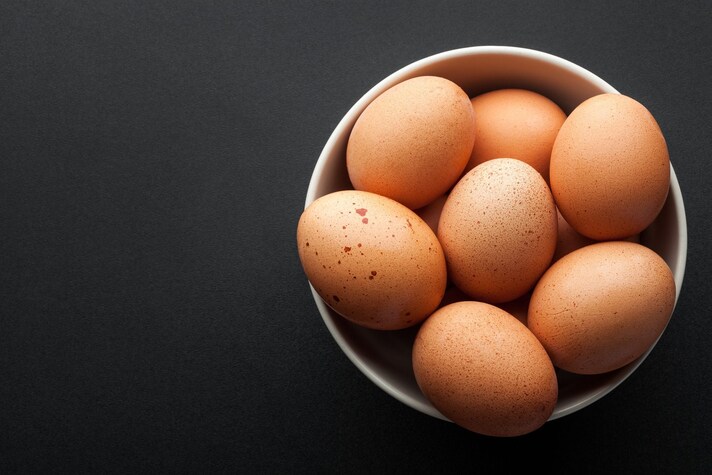
Catholicism has taken up all the traditions that had already seen the egg as a symbol of life, but reworked them in the new perspective of resurrection. This is very fascinating because, if you think about it for a moment, an egg seen from afar looks like a stone, it is lifeless, just like the tomb where Jesus was buried. Inside the egg, however, there is a new life ready to soar into the air, to be born from what seems dead.
In The Middle Ages We Began Giving Away Artificial Eggs
Although the custom of giving eggs as gifts is very ancient, the egg as an object in itself acquired value in the Middle Ages, probably in Germany: masters gave decorated eggs to their servants. The decoration was done in a natural way, by boiling chicken eggs wrapped in leaves and flowers so that they took on a color very similar to gold. Also in the Middle Ages a new tradition was born, aimed at the noble classes: artificial eggs, made by craftsmen, covered in precious materials such as silver, gold and platinum to give as gifts to the aristocracy. It is the ancestor of the Fabergé egg.
The custom had a great influence on Edward I who, upon his return from the Crusades, ascended the throne of England: throughout his mandate he commissioned around 500 gold-coated eggs to be given to relatives and "colleagues" for Easter.
From the Sun King to The Romanovs, The Egg Becomes Aristocratic
The European aristocracy greatly appreciates this new custom. Easter eggs are well regarded throughout the Old Continent and the gifts of Edward I have won over all other sovereigns. However, there is one ruler who finds these gifts a bit useless, an end in themselves, and manages to take the Easter egg to a higher level.
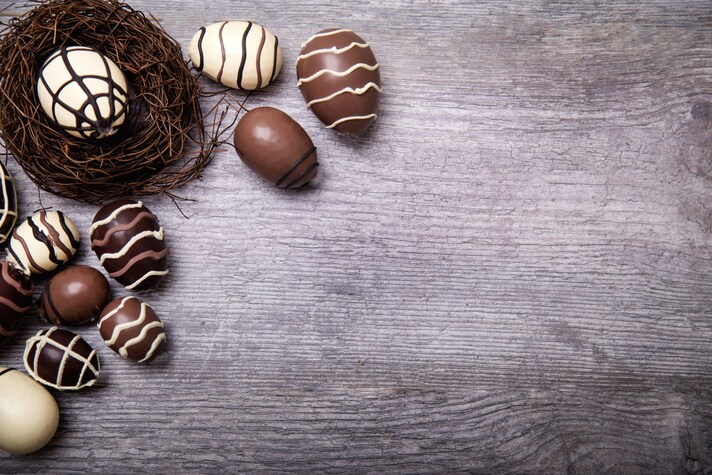
Louis XIV of Bourbon, known to most as the Sun King, was a great lover of food and wine, like his entire family. In his travels around Europe he never shied away from a good banquet and at Versailles he requested the best chefs on the market, with a marked preference for the art of confectionery. The great French pastry shop, still among the most renowned in the world, was born with Louis XIV; the same master chocolatiers began to specialize in the splendid villa outside Paris.
The Sun King's request went to them: make an Easter egg , but one made of chocolate. The idea is simply brilliant and brings the Easter egg to a whole new dimension, conquering all of Europe and forcing his "fellow" emperors to find new solutions to cheer up the aristocracy.
At the end of the 19th century in Russia, Tsar Alexander III Romanov managed to make people "forget" the chocolate egg thanks to a very special gift for his wife Maria Aleksandrovna: he asked a young goldsmith from St. Petersburg, who had just taken over from his father in the family workshop together with his brother Agathon, to create an Easter egg for the Tsarina. This goldsmith was Peter Carl Fabergé who, in 1885, created the first Fabergé egg, a white enameled platinum egg containing another egg, created in gold, which in turn contained two gifts: a reproduction of the imperial crown and a golden chick.
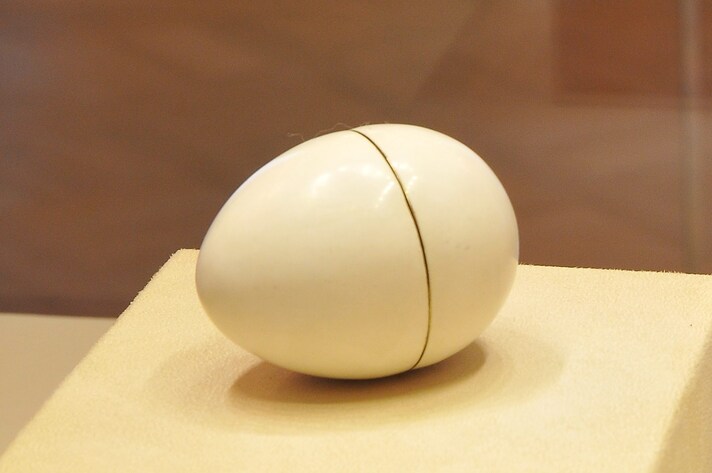
The fame that the first Fabergé egg achieved also helped spread the tradition of giving a gift inside the egg. Today, this egg is owned by Viktor Vekselberg, a Russian businessman and high-ranking official, and is exhibited at the Fabergé Museum in St. Petersburg. Its value is around 100 million dollars. Since ordinary people could not afford Fabergé eggs, it was Louis XIV's idea that was the most commercially successful, making the chocolate Easter egg one of the best-selling products in the world.
The Easter Egg Tradition Today
In the last century, the tradition of giving chocolate eggs, together with extreme industrialization, has created a thriving market that shows no signs of crisis. In many traditions, the egg still has a ritual throughout the holiday season.
In the Balkan and Orthodox tradition, for example, the chicken egg is hard-boiled and then colored, traditionally red like the first Christians in Mesopotamia, and eaten on Easter day. This custom is also kept alive in Italy: hard-boiled eggs are part of the traditional "fellata napoletana", which is a very opulent platter of cured meats to be eaten as an appetizer on Holy Sunday, as well as the Apulian Benedict of Easter.
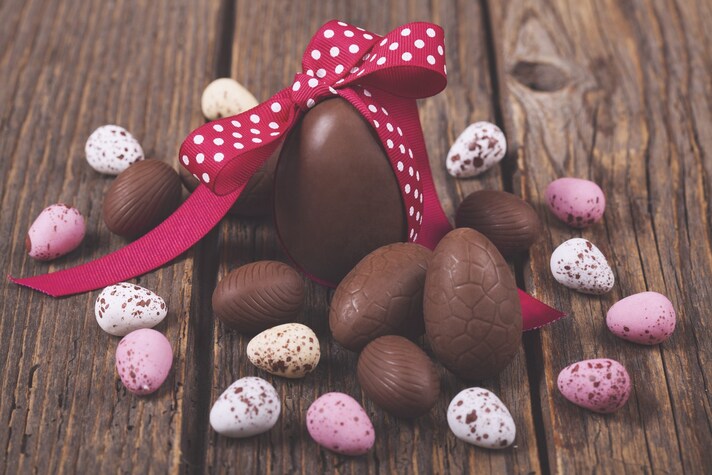
The widespread use of the Easter egg as we know it today is a direct descendant of the Sun King and concerns Italy very closely: it is modern, born in the 20th century, thanks to the prototypes of the Turin molds of the 18th century, which arrived in Piedmont thanks to relations with France. Until a few decades ago, the preparation was exclusively artisanal, but with the economic boom the egg has spread especially in a commercial way. Today we find eggs of the most varied sizes, with gifts inside, often themed, centered on a cartoon, a film or a football team.
In recent years there has been a revival of the classic egg prepared in an artisanal way, thanks to exceptional chocolate masters who offer real works of art. The chocolate egg takes us all back to childhood, to a time when problems seemed enormous but were actually very small. It reminds us of family lunches, with gifts from parents and grandparents; it brings to mind a deep relationship with ourselves, which as we have seen is an ancestral relationship that is lost in the mists of time. This is why even at 30 we want the Easter egg as a gift, we want to go back to being children for at least 10 seconds a year.
;Resize,width=767;)
